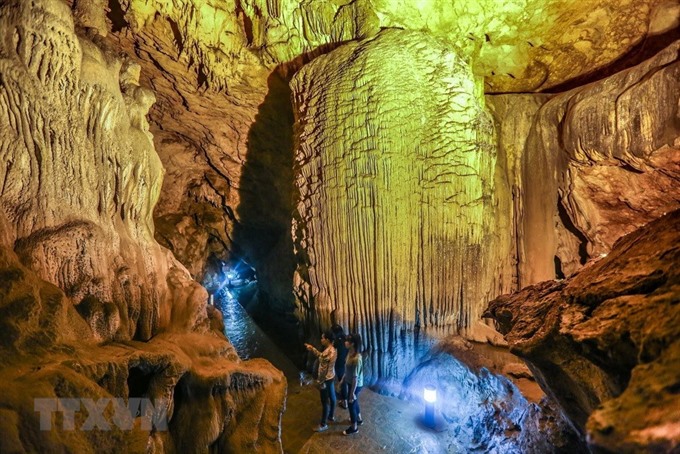 Life & Style
Life & Style

The northern mountainous
 |
| Rich rocks: Non Nước Cao Bằng Geopark is home to fossils, ocean sediment, volcanic rocks, minerals, and especially karst landscapes, which can give researchers insights into an over-500-million-year history of the Earth. — VNA/VNS Photo Trọng Đạt |
CAO BẰNG — The northern mountainous
At a working session with representatives of the provincial People’s Committee, UNESCO experts noted that Cao Bằng has launched three tours in the geopark and paid attention to ensuring safety for tourists, while stepping up the information work in order to promote the image of the tourist site. However, they said, there remain limitations regarding the quality of notice boards, parking lots and management work.
They suggested that the province place more notice boards to attract holiday-makers, and the provincial People’s Committee and the geopark’s management board closely coordinate with localities and residents in the management work. The management board should be authorised to handle specific violations, they said, stressing the need to develop a staff of professional tour guides at the geopark.
Cao Bằng authorities called on UNESCO to soon set forth a detailed master plan to deal with shortcomings in the development and protection of the geopark, and suggested UNESCO experts help with measures to protect open-air fossils and promote heritage values at the park.
Non Nước Cao Bằng Geopark was recognised as a global geopark by the UNESCO Global Geoparks Council in
Non Nước Cao Bằng is about 300km from Hà Nội. It covers more than 3,000sq.km in the districts of Hà Quảng, Trà Lĩnh, Quảng Uyên, Trùng Khánh, Hạ Lang and Phục Hòa, and part of Hòa An, Nguyên Bình and Thạch An Districts.
The geopark is home to fossils, ocean sediment, volcanic rocks, minerals and especially karst landscapes, which can give researchers insights into an over-500-million-year history of the Earth. It is also well known for its rich biodiversity and many indigenous fauna and flora species.
Aside from natural values, it also contains a number of tangible and intangible cultural heritages, particularly revolutionary relic sites such as the special national relic site of Pác Bó, where Nguyễn Ái Quốc, or President Hồ Chí Minh, returned to Việt Nam in 1941 to lead the domestic revolution after spending over 30 years abroad searching for ways to save the country.
The geopark is also home to special national relic site of




